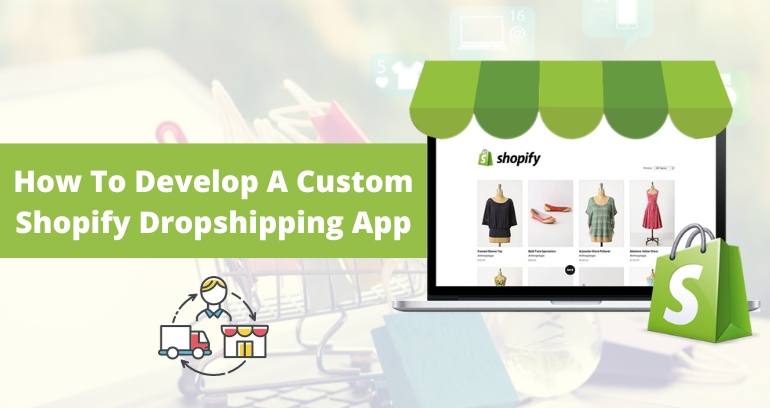As you already know, to start a business online, you should have an eCommerce store. So, for that, the first demand that arises is a need for an eCommerce platform, and we find no other solution better than Shopify. Shopify is a widely accepted eCommerce platform, which makes an eCommerce store easy to start, manage, and expand. It is a user-friendly eCommerce platform, which takes care of all the aspects relevant to operating an eStore from its hosting to customization.
Even with Shopify, you can develop your online store with no help from a developer or any designer. Shopify comes with customization options to fulfill the need of any business type. A plethora of themes and apps that are available on Shopify will also help you to emerge with an expected online store.
But, as you know all good comes with flaws, so is Shopify. Well, it’s very interesting to develop an online store, but it may sometimes turn out to be a tough job. The problems that beginners face in using Shopify may prove to be discouraging.
Today, in this post we will put forward some common problems that a new Shopify user usually faces while working with Shopify. So, let’s start.
Problems That Shopify Store Owners Faces
Let’s now check out common issues the new Shopify users face while working with Shopify.
Problem with Getting Products on Store
There are various issues a first-time Shopify user faces, but the biggest one is getting products on the Shopify store. It can be either from your product listings or the marketplace.
Well, one can use CSV files to import products but, did you know, it may crash in between if it catches up even a single error. Obviously, failing at mid-transfer or ahead of that, may leave you with none other option despite uploading one product at a time. It may be feasible to try this option when you are having a few products, but with thousands and more products, such an option will emerge to be an issue. In fact, adding Categories, Attributes, and various Images, ask for the repetition of the same process for every item.
Well, we all are aware of the significance of Inventory Management. The online sellers who need to manage various marketplace will demand real-time inventory status. Having appropriate data in hand may save selling from being risky. The absence of such data may affect the operation of businesses in various sections in the long run.
Issue Relevant to 3rd-Party Shopify Analytics Apps
Undoubtedly, Shopify is a big eCommerce platform, that’s why it comes with tons of 3rd-party Shopify reporting and analytics apps. But, most of such apps just demand Shopify data and Google Analytics, next, beautify it, and expose the reports in front of you. Again, they lack insights and fail to offer any actionable result that may be beneficial for Shopify store owners.
Difficulty In Finding Customer
Finding customers for selling products is not a new issue for the beginners of Shopify who are also new to eCommerce. In this concern, it’s advisable to invest in marketing.
Also, one can join a marketplace to perform well. You can incorporate their customer base to build your Shopify store. Proper advertising and promotion will help you in achieving that. For a better engagement, you should optimize your store, which leads to enhanced customers.
Complexity In Setting Google Analytics On Your Shopify Store
The most preferred web analytics, Google Analytics comes with its advantages and disadvantages. Setting up Google Analytics on your Shopify store is not user-friendly but, it’s easy to set up your Shopify store.
Post you set up Google Analytics, you should enable eCommerce tracking, set the goals, conversions, and a lot more. Well, this is quite complicated and Shopify store owners find it tough to set up Google Analytics for their stores.
Issues In Increasing Sales
You can’t increase sales with increased traffic. So for that, you should provide your products to the right customers who need them. It’s quite challenging for sellers to convert their prospects into customers. But, it’s important to know how to manage such a scenario. This will decide your success and failure. You can build that trust in your customer by creating ad campaigns, offering sure-shot cashback, sharing customer experiences, and more.
Difficulty In Managing Marketplaces
A person who manages distinct marketplaces experiences much pressure and workload. Being a store owner, especially a new Shopify user, it becomes tough to manage everything like getting inventory status, shipping and order management, SKUs check, etc. To ease the job of a seller, Shopify comes with various apps that help in reducing workload.
Complexities Faced With Native Shopify Analytics
In Shopify, native Shopify analytics or in-house Shopify reports hold significance. Being a Shopify merchant you need to check such in-house reports or analytics that Shopify offers. If we talk about Shopify analytics, they usually lack actions/insights that are the crucial points, which allow your store to grow flawlessly.
Well, talking about the higher plans of Shopify, they include amazing reports on Products, Customers, Sales, and more, but these are limited to the online business owners only who pay for these. That’s why most of the store owners with basic plans are left with various issues.
Main Pain Points Of Shopify Stores
Well, right now, there are about 600,000 businesses that were developed by Shopify with 1M+ active users. In the market, there are a plethora of apps that assist businesses to attain success in online businesses.
If we talk about an average scenario, all the Shopify stores use 4 apps. But still, some pain points exist that make Shopify app developers stuck. To locate such pain points, you may catch up with various new apps if you regularly visit the app store.
As per a survey conducted by Shopify, the top pain points that make merchants visit the Shopify app store are:
- Understanding trend and website traffic
- Customizing the look and feel of the store
- Updating inventory and products
Other Analytics Problems Faced By Shopify eStore Owners
On the Shopify App Store, you will find numerous apps that claim to offer the merchants better analytics solutions. Although, most of the apps are only reporting apps that just take the Shopify Analytics or Google Analytics data and reveal the reports to the merchants after beautifying it.
Following are some complexities which the eStore owners are facing with such analytics solutions:
Fail To Report Data Quickly
The analytics tools, like Google Analytics, report data much slowly. They start with collecting data from the site, next, process it on their server. These steps take quite a long time, from a few hours to even days to produce reports on this accumulated data. However, Google Analytics has included a real-time section in their free analytics tool, so, this slow speed of data processing becomes annoying sometimes.
No Clear Way Out to Act-On Data
This analysis exhibits a lot of information related to reports, but here the main challenge is acting on that data. With no well-defined actionable insights, it’s tough to implement modifications on your online store to optimize its performance.
Lack Of Predictions On Traffic & Sales
Being an eCommerce store owner, you should know about traffic predictions and sales. By knowing the expected sales volume that you are going to achieve during the upcoming holiday season, you can make yourself all set beforehand. The same rule goes well with marketing campaigns and their impact on sales and traffic. Approximately, all the current analytics solutions fail in this field. They don’t provide any sort of predictive analytics for the Shopify store owners.
How To Resolve Such Analytics Issues For Merchants?
Today, the world of online shopping is expanding seamlessly, which results in an enhanced volume of information that should be accumulated. The requirement for information analysis grows along with a business.
In eCommerce, predictive analytics plays an important role. It performs well following the principle of accumulating and analyzing the purchasing history, browsing the patterns, and more similar types of activities performed by customers on the online store.
Later, this type of data is used to find the following:
- Type of products people like to buy and when
- The probability of conversion
- The demand and supply pattern, and
- Quantity of returns expected.
Besides predictive analytics, online store owners also need real-time data and some actionable insights to customize their inventory, marketing, and more to enhance sales. After getting information from buyers it would be quite easy for them to make changes. Shopify store owners should use an analytics app/solution that performs smoothly with Shopify and offers real-time predictive analytics.
Conclusion
Well, we have incorporated the issues that beginners face while using Shopify and the required solutions in this post. But, let us inform you that these are some common issues. A seller may deal with a lot of problems while conducting all the required processes.
The Shopify App Store holds varied apps that help online sellers to automate their process of selling. Apart from that, such applications help the merchants in saving their time. So, being an online seller, by using such apps you can manage the entire operations of the Shopify store and increase your sales smoothly.
Emizentech is a leading Shopify development company that has helped clients develop ecommerce stores for a global audience. If you have any projects in mind just let us know.





 USA
USA UK
UK